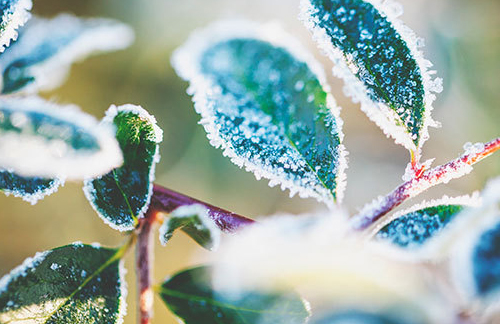In most places, March signals the start of spring with temperatures steadily rising and plants beginning to bud. But in Ohio, we know that March means a few days of nice weather followed by snow. While this unpredictable weather is hard on all of us, it's especially hard on plants. After a few warm days in March or April, plants come out of their dormant winter naps and begin to show signs of life again. That is, until a spring frost hits. But don't fret, we have a few tips on how to save your plants from frost damage and even bring them back to life afterwards!
Frost Protection for Plants
No surprises here – simply cover your flowers and shrubs with a sheet or burlap sack the night before a frost. Much like your cozy down comforter, this will help keep your plants warm throughout the night. Remember to remove the covers in the morning as the new day’s sunlight will bring warmth and keep your plants on a normal light cycle.
Reviving Frost Damaged Plants
While a sheet or burlap sack might always protect plants from cold nights in South Carolina, Ohio frosts are sometimes too strong to stave off. All homeowners know the feeling of waking up after a cold snap and seeing the tiny buds of spring plants covered in frost – or worse – snow. However, all hope is not lost.
Yes – severe frost bite could leave a portion of the plant dead, but the stem and roots might still be in good shape. Your first instinct is probably to prune the dead parts to allow for new growth, but we recommend waiting until you’re sure you’ve seen the last of the spring frosts. Pruning before the last frost makes your plant more likely to die as it will spend a lot of energy growing new foliage only to have it die again. Not only will this kill any new foliage, the plant will have less energy to deal with the cold temperatures and could succumb to the frost.
In the meantime, simply water your plant like normal and avoid fertilization for the same reason you shouldn’t prune until after the last frost—new growth before the last frost can result in the death of your plant.
After you’re sure the last frost of the spring has come and gone, carefully prune the dead foliage from your plants. If you were patient and waited a few weeks to prune, you should be able to see the beginnings of new growth. Simply trim back the dead areas around the new growth. Excessive pruning or fertilizing could still cause the plant to use more energy than it has stored up.
As spring turns to summer, you can trim away the rest of the dead foliage and let your plant flourish.
If you’re experiencing frost damage to your plants, contact the experts at Grass Master. We can help save your plants after a frost!

